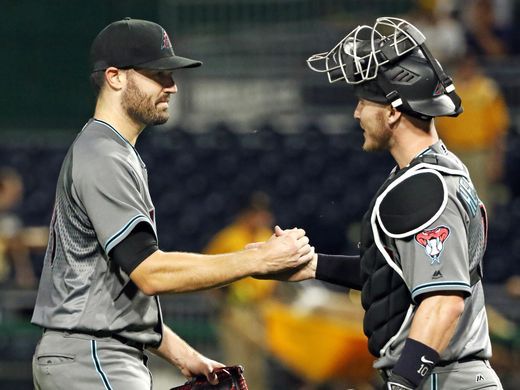When looking at Robbie Ray’s numbers from 2016 to 2017, there were some near identical statistics. He walked 71 batters in both years. He struck out 218 in back-to-back seasons as well. But he saw his earned run average drop from 4.90 to 2.89.
One of the biggest changes between those years?
His use of the curveball.
According to FanGraphs, the southpaw threw his curveball 5.5% of the time in 2016. In 2017, it jumped to 20.5%.
“It’s a pitch that I worked on in spring last year,” Ray said. “(I) just got more comfortable with it. I was able to throw it early in the count and also to finish guys with. I mean it’s just something that the more I threw it, I just got more comfortable with it.”
Integrating the curveball meant throwing more pitches outside of the zone, but according to FanGraphs, Ray was second in all of baseball last year in getting players to swing and miss on pitches outside of the strikezone. Though, he feels that rang true his pitches across the board in 2017.
“The curveball is probably a big factor, but I feel like with all my pitches, it was probably more (evident) than it was before,” Ray said.
Robbie Ray and the humidor
The 2017 All-Star saw interesting numbers when it came to contact last year. He forced batters to swing and miss frequently, like, best in baseball frequently. But when they made contact, no one was hit hard more frequently than Ray.
Robbie Ray simultaneously had the best SP whiff rate of 2017 *and* the worst SP hard-hit rate.
Sounds like a guy who might like a humidor.
MORE -> https://t.co/mY5tWXK7Lw pic.twitter.com/RFvKov3ObN
— Mike Petriello (@mike_petriello) February 16, 2018
While Chase Field’s addition of a humidor could help stifle that hard contact and aid Ray even more, he is in a wait and see approach.
“You never really know what it’s going to do until you actually try it,” Ray said. “It’s interesting. The science behind it seems like it’s going to help out, but it’s one of those things where you just never really know.”




